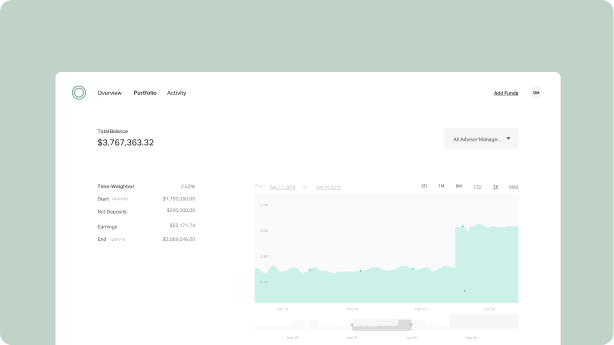If done correctly, acquiring an RIA can accelerate your firm’s growth. However, without proper planning, it can also lead to poor culture fit, integration nightmares, and unhappy clients.
In this article, we’ll explain how you can determine if an acquisition opportunity is right for you, the top considerations for structuring your acquisition, and what to keep in mind post-acquisition to ensure a smooth transition.
Why would a financial advisor sell their firm to me?
Financial advisors choose to sell their firms for a few common reasons. Understanding a seller’s motivation will help you qualify deals more quickly and increase your chances of a successful close.
While some advisors want to take advantage of favorable market conditions, a financial exit, or a partnership with a strategic buyer, other advisors will be executing a thoughtful succession plan to preserve their legacy and do right by their clients.
As the acquiring RIA, you’ll want to ensure that the selling advisor prioritizes their client relationships and will work toward a seamless transition that maintains their clients’ goodwill.
How to determine if an acquisition opportunity is the right fit
Acquiring a complementary RIA can diversify your client base and grow your AUM, but it also has its limits. It’s therefore important to ensure that both the team and their clients are a good fit for your firm. By doing so, you increase the probability that your new clients stay with you long-term, and will refer others in their network.
Assessing team fit
Here are some things to look for—and avoid—as you perform your due diligence:
Cultural alignment
- Green flag: The firm shares your emphasis on fiduciary duty and putting clients’ best interests first.
- Red flag: The firm’s advisors regularly pitch high-fee products that benefit the firm more than the client. As a result, clients complain about feeling pressured or “sold to,” which could damage your overall brand.
Expertise and credentials
- Green flag: The firm’s advisors hold industry designations (for example, CFP, CFA, or CPA) that you may use to complement your existing service offerings.
- Red flag: The firm’s advisors claim to have advanced designations but aren’t actually in good standing. Clients may discover the lapsed credentials which could lead to distrust among your firm.
Retention strategies and key personnel
- Green flag: The firm’s advisors who own the strongest client relationships indicate they are open to retention agreements with your firm (for example, earn-outs, equity stakes, or stay bonuses).
- Red flag: The firm’s advisors never discuss their post-acquisition plans with you, putting key client relationships at stake. Post-acquisition, one top advisor could immediately quit, taking a large amount of clients and assets with them.
Operational processes and technology
- Green flag: The firm has created robust standard operating procedures for trade approvals, client reviews, and auditing. These policies are in line with your practice and would be seamless to integrate.
- Red flag: The firm lacks operational discipline, either not having processes clearly defined or having policies with documentation gaps. After the deal, you may uncover significant compliance infractions, which could expose you to regulatory fines.
Communication and service model
- Green flag: The firm has a documented method of communicating with clients—through phone, email, or in-person reviews. Their existing communication preferences align with how your firm manages client relationships.
- Red flag: The firm’s advisors rarely follow up with their clients without being prompted, leaving clients dissatisfied. The disruption of your acquisition could lead some clients to look for a new firm.
Assessing client fit
In addition to ensuring potential team fit, you should also consider whether the firm’s client base has synergies with your expertise, service offerings, and business model. Remember, you’re paying for a multiple of earnings generated by servicing these clients. It’s important that they stay with your firm and make sense for your business in the long term.
Client demographics and needs
- Green flag: The firm’s average client overlaps significantly with your ideal client profile.
- Red flag: The firm caters to a unique demographic that you currently don’t service. If you acquire the firm, you may not be able to provide value to this new customer segment.
Fee structure and revenue model
- Green flag: The firm’s compensation structure aligns with your beliefs on the ideal way to earn client fees. For example, if you are a fee-only practice, it’s unlikely you’d want to acquire a firm that charges for commission-based products.
- Red flag: The firm’s compensation structure varies significantly from your own, and clients may become confused or upset by sudden shifts in how they are charged.
Client concentration and stability
- Green flag: The firm has a long average client tenure, low churn rates, and reasonable explanations for past client departures.
- Red flag: The firm’s average client tenure is extremely short, which could lead you to overpaying for clients and future revenue that you may never see.
Investment management and risk tolerance
- Green flag: The firm’s advisors proactively assess their clients’ suitability and communicate the risk of different investment products upfront to their clients.
- Red flag: The firm’s advisors bypass standard suitability tests during client onboarding, leading some clients to be unaware of the risk level of certain portfolios they’re invested in.
Geographic and service alignment
- Green flag: The firm provides niche specialty services—like business planning for self-employed individuals—which align with service offerings that you currently provide to clients of your own.
- Red flag: The firm focuses on a unique customer base (for example, tech executives), but you lack the tax and equity comp expertise they demand. These clients could depart soon after the acquisition if you’re unable to continue their existing service.
How much should I pay for a firm?
RIAs are typically valued on a multiple of their earnings before interest, taxes, depreciation, and amortization (EBITDA). A company’s EBITDA metric can tell you how profitable it is when factoring in the cash operating expenses of running the day-to-day business.
Historically, EBITDA multiples for RIA firms have hovered in the range of 7-9x, with the exact price a buyer is willing to pay depending on factors such as the strength of the management team, client makeup, and stable, recurring revenue.
Ultimately, the price you determine for a proposed acquisition will depend on the relative attractiveness of the business, market multiples at the time of your negotiations, the results of your pro forma analysis, and the return on investment requirements necessary for your capital stack.
What are my financing options?
After you sign a letter of intent (LOI), you’ll need to figure out how you’re going to pay for the acquisition.
Don’t have millions of dollars in cash sitting around on your balance sheet? Don’t worry—most buyers don’t, which is why there’s the concept of a capital stack—using different funding sources to complete your acquisition.
Your capital stack can be a mix of equity and debt funding sources—each of which can be categorized further based on varying levels of risk and return scenarios.
Funding your acquisition with debt
Debt represents a financial contract in which you must repay the amount you received from a lender, typically at a predetermined interest rate. There are three types of debt that are common in acquisitions.
- Senior debt typically comprises the largest portion of a capital stack—often 50-70%. If you’re looking for bank debt or an SBA-backed loan, this would be considered senior debt. This type of financing sits at the bottom of the capital stack and is paid back first in the event that the business is no longer able to repay its lenders. It’s the least risky funding for the provider and comes with the lowest interest rate among all debt types.
- Subordinated debt is paid back next in a deal’s capital structure. It is riskier and therefore “junior” to senior debt, and comes with a higher interest rate. Outside of traditional loans, buyers can leverage a seller note—a loan provided to the buyer by the seller to fund a portion of the capital stack.
- Mezzanine debt is a type of subordinated debt that acts as a hybrid security—it comes with certain debt repayment terms, and additional equity upside for the lender through the option to purchase shares at a predetermined price.
Raising capital from investors
RIAs may also seek to raise equity capital from investors, which oftentimes is issued as preferred equity, giving investors special rights above common shareholders. This type of equity is usually issued with a preferred dividend and may include additional economic upside.
Two ways to structure your acquisition: asset sale vs stock sale
Once you sign a LOI, you’ll begin working with your attorneys to draft the proposed transaction documents. There are two primary ways to structure an acquisition—either an asset sale or a stock sale.
Most acquisitions in the lower-middle market are structured as asset sales, allowing the buyer to leave behind any existing seller liabilities, including debts, contractual obligations, and legal liabilities. However, the larger a deal is, the more likely the transaction will be structured as a stock sale, which includes liabilities. Sellers prefer this structure as it results in lower taxation through capital gains tax.
In either case, there are several RIA-specific compliance considerations to keep in mind when structuring your acquisition:
- Confirm that the seller is appropriately registered with the SEC or state regulators, depending on the jurisdiction and AUM thresholds.
- Determine whether the acquisition will require new or amended state or SEC registrations.
- Confirm that all advisors and key personnel transferring to your business meet state or SEC licensing requirements.
- Identify whether client advisory agreements contain provisions requiring consent for the assignment of contracts or changes in ownership.
- Review custodial agreements to ensure they allow for account transfers or ownership changes.
The specifics of your acquisition can be detailed and complex. You should work with a trusted attorney who has experience in RIA M&A to make sure all compliance requirements are addressed.
Should the seller remain employed at my firm?
During your negotiations, you’ll have to address the elephant in the room—how involved will the seller be after the acquisition closes?
One of the key considerations is the business’s dependency on the seller and the seller’s relationships with their clients. Ultimately, you’ll want to mitigate the risk of clients leaving the firm once the selling advisor leaves.
These worries are warranted and common for acquirers. For this reason, many acquisitions include an earnout—a provision that requires the seller to stay at the company for a set period of time or after reaching certain performance thresholds, in order to receive a deferred component of their firm’s sale.
Post-acquisition integration
One of the most essential variables in an acquisition is the post-close integration. Here are a few tips:
- Start by clarifying your strategic vision for the future so that everyone on your newly expanded team is rowing in the same direction.
- Next, standardize all operations and compliance practices to meet regulatory requirements and maintain client trust. Streamline technology platforms—such as CRM systems, portfolio management software, and reporting tools—to increase efficiency and consistency.
- Finally, connect with existing and new clients, communicating your new partnership and any changes or benefits that clients will experience over the coming months.
The time required to integrate a new firm and its clients shouldn’t be underestimated. However, addressing your strategy early on will help you minimize the time away from your day-to-day responsibilities and return to normal operating procedures as quickly as possible.













